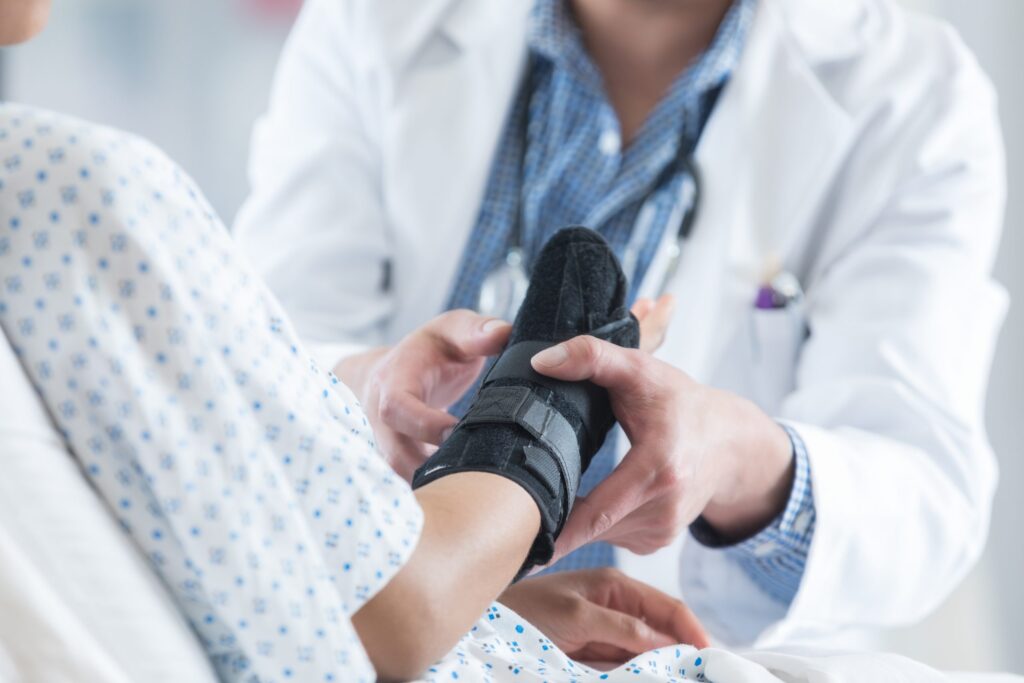
Bone Fracture Basics
- Posted on:
- Posted in: Health
Fracture is probably one of the many words that you hope your doctor does not say when they are explaining your diagnosis. A fractured bone often comes with the burden of pain, casts, x-rays, physical therapy and a long healing process. Unfortunately, going through the steps to properly heal a fractured bone is the reality for many people every year.
Rest assured, there are orthopedic specialists available in your community who want to help you heal your damaged bones. Your doctor will work with you to devise a plan that best suits your unique circumstance, and will support you until the day you make a full recovery.
A bone fracture is a common medical term, but you may not know a lot about this particular type of injury and the preventative actions that you can take to avoid one. The following information will give you a brief introduction on bone fractures. Please speak to your provider to learn more.
Causes of Bone Fractures
Generally, a bone fracture is caused by trauma, overuse or osteoporosis.
Trauma
Trauma refers to an impact that results in an injury, such as a car accident or a fall. Like a plastic ruler, your bones can only take so much sheer force before breaking. The amount of force a bone can handle depends on its positioning in the body, its size and the muscles and ligaments that support it. For example, the femur is surrounded by your leg muscles and tissues, and is the largest bone in your body. The femur can handle much more force than your collarbone, which is fragile and exposed.
Overuse
Overuse fractures are when repetitive and continuous motions cause weak spots or cracks in the bone. A stress fracture is an overuse bone injury that is common among athletes. Most stress fractures occur in the foot or lower legs as a result of the repetitive stress of the foot striking the ground. Listen to your body and avoid high impact if you are feeling pain.
Osteoporosis
Osteoporosis is a disease that usually affects older adults. Bone deterioration and a loss of bone mass are two symptoms of osteoporosis that can cause fragile bones. This may occur when new bone creation cannot keep up with the natural process of bone removal in the body. Sadly, an osteoporotic fracture can appear after very minimal trauma, such as bumping into a countertop. Fractures in the spine, called vertebral compression fractures, can also be caused by osteoporosis. This type of fracture may occur when the weakened vertebrae bones crack as a result of pressure.
Bone Fracture Severity
The severity of a bone fracture usually depends on bone health and the amount of force that caused the injury. Your bones do have some flexibility, but they can snap or shatter when an outside force is too great. An adult human has approximately 206 bones that can all withstand a different amount of force.
Difference between a break and a fracture
Surprise! A broken bone and a fractured bone mean the same thing. Both terms refer to a disruption in the normal bone structure in the body. Your physician may use break and fracture interchangeably when talking about a damaged bone. There is a common misconception that a broken bone is worse than a fractured bone, but this is simply not the case. A fracture can range from being a tiny crack in the bone, to being a bone that is shattered into several fragments.
Bone Fracture Treatment
So, after you fracture your bone, what’s next? Your physician will recommend a plan that is best for you. It may or may not include:
- RICE (Rest, Ice, Compression, Elevation)
- Splint or cast
- Physical therapy
- Surgery
How to Prevent a Bone Fracture
If you exercise or are an athlete, always use proper equipment, rest when necessary and pay attention to your form to reduce your risk of a bone fracture.
Additionally, diet and lifestyle are two important factors that impact the health of your bones. Consistently eating a balanced diet that contains the recommended amount of calcium and vitamin D will help your bones maintain proper density. Lifting weights and strength exercises are also key to keeping your bones strong. Your bones are living tissue that adapt to accommodate the needs of your body. Regular exercise puts your bones under stress. Therefore, your bones will naturally respond to this stress by building up strength and density.
To keep you and your bones healthy, focus on exercise and a balanced diet that is rich in nutrients.
SHARE


